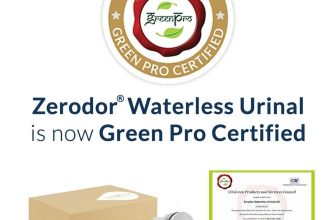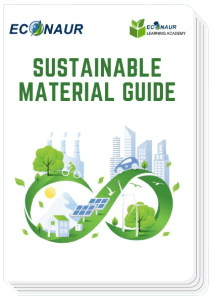Impact of Indoor Air Pollution in Buildings & need to improve the Indoor Air Quality
Indoor Air Quality (IAQ) refers to the air quality within and around buildings and structures, especially as it relates to the health and comfort of building occupants. Understanding and controlling common pollutants indoors can help reduce your risk of indoor health concerns.
Health effects from indoor air pollutants may be experienced soon after exposure or, possibly, years later.
Immediate Effects
Some health effects may show up shortly after a single exposure or repeated exposure to a pollutant. These include irritation of the eyes, nose, and throat, headaches, dizziness, and fatigue. Such immediate effects are usually short-term and treatable. Sometimes the treatment is simply eliminating the person’s exposure to the source of the pollution if it can be identified. Soon after exposure to some indoor air pollutants, symptoms of some diseases such as asthma may show up, be aggravated or worsen.
The likelihood of immediate reactions to indoor air pollutants depends on several factors including age and preexisting medical conditions. In some cases, whether a person reacts to a pollutant depends on individual sensitivity, which varies tremendously from person to person. Some people can become sensitized to biological or chemical pollutants after repeated or high-level exposures.
Certain immediate effects are similar to those from colds or other viral diseases, so it is often difficult to determine if the symptoms are a result of exposure to indoor air pollution. For this reason, it is important to pay attention to the time and place symptoms occur. If the symptoms fade or go away when a person is away from the area, for example, an effort should be made to identify indoor air sources that may be possible causes. Some effects may be made worse by an inadequate supply of outdoor air coming indoors or from the heating, cooling or humidity conditions prevalent indoors.
Why are people suddenly talking about IAQ?
The reason is indoor air quality in India; especially in Delhi has become very poor. Over a million people in India die every year because of indoor air pollution, amongst the highest in the world. Unlike many western countries, India does not have any norm for indoor air pollution, which mandates emission norms for home appliances such as refrigerators, air-conditioners, and bread toasters and a limit beyond which dirty air inside homes can be bad for one's health. The World Health Organisation (WHO) warned that healthier homes and workplaces could prevent around 1 million deaths, globally, a year, and explicitly singled out indoor air quality as a factor.
Factors Affecting Indoor Air Pollution
Much of the building fabric, its furnishings and equipment, its occupants, and its activities produce pollution. In a well-functioning building, some of these pollutants will be directly exhausted to the outdoors and some will be removed as outdoor air enters the building and replaces the air inside. The air outside may also contain contaminants that will be brought inside in this process. This air exchange is brought about by the mechanical introduction of outdoor air (outdoor air ventilation rate), the mechanical exhaust of indoor air, and the air exchanged through the building envelope (infiltration and exfiltration).
Pollutants inside can travel through the building as air flows from areas of higher atmospheric pressure to areas of lower atmospheric pressure. Some of these pathways are planned and deliberate so as to draw pollutants away from occupants, but problems arise when unintended flows draw contaminants into occupied areas. In addition, some contaminants may be removed from the air through natural processes, as with the adsorption of chemicals by surfaces or the settling of particles onto surfaces. Removal processes may also be deliberately incorporated into the building systems. Air filtration devices, for example, are commonly incorporated into building ventilation systems.
Managing the Indoor air Quality in Buildings
Remodeling and Renovation
- Use effective strategies for material selection and installation.
- Isolate construction activity from occupants.
Painting
Establish a protocol for painting and insure that the protocol is followed by both in-house personnel and by contractors.
- Use low VOC emission, and fast-drying paints where feasible.
- Paint during unoccupied hours.
- Keep lids on paint containers when not in use.
- Ventilate the building with significant quantities of outside air during and after painting. Insure a complete building flush prior to occupancy.
- Use more than normal outside air ventilation for some period after occupancy.
- Avoid spraying, when possible.
Pest Control Integrated Pest Management
- Use or require the use of Integrated Pest Management by pest control contractors in order to minimize the use of pesticides when managing pests.
- Control dirt, moisture, clutter, foodstuff, harborage, and building penetrations to minimize pests.
- Use baits and traps rather than pesticide sprays where possible.
- Avoid periodic pesticide application for the “prevention” of pests.
- Use pesticides only where pests are located.
- Use pesticides specifically formulated for the targeted pest.
- Apply pesticides only during unoccupied hours.
- Ventilate the building with significant quantities of outside air during and after applications.
- Insure a complete building flush prior to occupancy.
- Use more than normal outside air ventilation for some period after occupancy.
- Notify occupants prior to occupation.
- If applying outside, keep away from the air intake.
Establish and Enforce a Smoking Policy
Environmental tobacco smoke (ETS) is a major indoor air contaminant. A smoking policy may take one of two forms:
- A smoke-free policy that does not allow smoking in any part of the building.
- A policy that restricts smoking to designated smoking lounges only.
Managing Moisture and Mold
Mold thrives in the presence of water. The secret to controlling mold is to control moisture and relative humidity
- Keep relative humidity below 60% (50%, if feasible, to control dust mites)
Keep all parts of the building dry that are not designed to be wet
- Adequately insulate exterior walls or ceilings to avoid condensation on cold surfaces
- Insulate cold water pipes to avoid sweating
- Clean spills immediately. Thoroughly clean and dry liquid spills on porous surfaces such as carpets within 24 hours, or discard the material
- Do not allow standing water in any location
- Maintain proper water drainage around the perimeter of the building
- Provide sufficient exhaust in showers or kitchen areas producing steam
Thoroughly clean areas that are designed to be wet
- Wash floors and walls often where water accumulates (e.g., showers)
- Clean drain pans often and insure a proper slope to keep water draining
- Insure proper maintenance and treatment of cooling tower operations
Discard all material with signs of mold growth
- Discard furniture, carpet, or similar porous material having a persistent musty odor
- Discard furniture, carpet, or similar porous material that has been wet for more than 24 hours
- Discard ceiling tiles with visible water stains
Conclusion
The direct impact of indoor air quality will not be readily apparent. It could be long to see a statistical change. But one thing we keep in mind is that “People have the right to breathe clean and safe air everywhere”.








